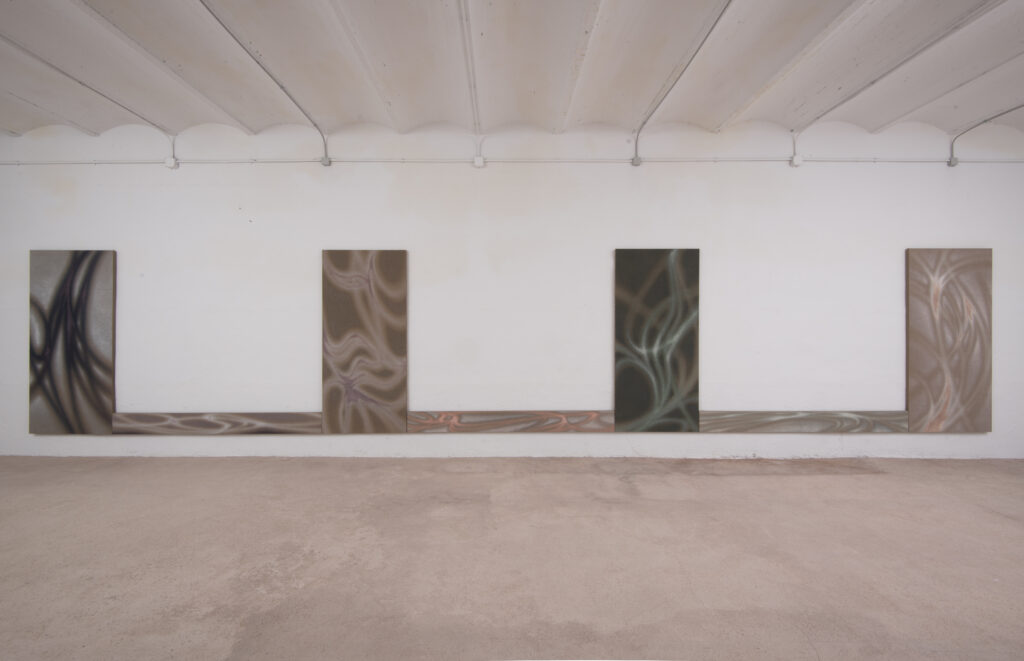Lucas Dupuy’s “One Panoramic View After Another Will Unfold” at Belmonte Gallery delves into the emotional resonance of fractal geometry, transforming mathematical precision into evocative visual art.
Fractals, known for their self-similar patterns that repeat at various scales, have long fascinated mathematicians and artists alike. They appear in nature’s most mesmerizing forms, from the spirals of DNA to the branching of trees, and are celebrated for their aesthetic allure and profound mathematical implications. Dupuy’s fascination with these endlessly recursive shapes transcends mere mathematical curiosity, seeking instead to evoke an emotional response through their ubiquitous yet often unnoticed presence in the world around us.
Dupuy’s exploration of fractals is not just an intellectual exercise but a journey into the emotional resonance these patterns can evoke. His work captures the essence of fractal geometry’s inherent symmetry and infinite complexity, translating these mathematical principles into visual art that speaks to the human experience. The interplay of light filtering through tree canopies, the transient dance of dust motes in a sunbeam, these ephemeral moments are suspended in his canvases. Dupuy deftly balances light, shadow, tone, and texture to create a sense of fleeting yet profound beauty, mirroring the subtle, often overlooked patterns that shape our everyday lives.
The artist’s process begins with serigraphed drawings that distance his hand from the creation, aiming for an appearance of spontaneity through meticulous planning. Each sketch undergoes extensive digital manipulation, echoing the fractal pattern’s recursive nature. These digital explorations are then transferred onto heavy burlap, where layers of pigmented gesso build up to form dense spots of color, contrasting with the raw fabric’s shadows. Dupuy’s bold brushstrokes defy gravity, suggesting an infinite expanse beyond the canvas, inviting viewers to imagine the unseen continuation of these patterns.
Complementing these works are graphite blurs that trace the topographic contours of irregular surfaces, paying homage to Max Ernst’s frottage technique. Dupuy’s fusion of traditional methods with advanced digital processes results in textured reliefs that serve as a collage of visual references. From architectural magazine images to video game graphics and personal photographs, his panels blend diverse elements into cohesive, fictitious landscapes. As perspective shifts and the physical merges with the digital, Dupuy’s work captures the fossilized imprints of these imaginary terrains, offering a panoramic view that unfolds endlessly in the mind’s eye.
Alexander Zaxarov
